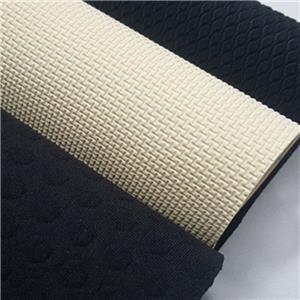About Neoprene
Neoprene Overview:
Are you familiar with the fabric, neoprene? If you've ever felt, worn, or seen a wetsuit (like the ones used for scuba diving or surfing) it was probably neoprene. As described by Mood’s fabric dictionary Neoprene is a synthetic rubber that’s often used to make wetsuits, hence its alternative name scuba knit. Neoprene has become increasingly popular as a material to wear and use (on land and sea) because of its many qualities like stain resistance and general durability.
prene was made by Dupont as an alternative to natural rubber in the early'30s. Neoprene is a double knit fabric that can withstand temperatures from -50 degrees to 275 F. It varies in thickness, usually being 3-5 millimeters.
Neoprene Characteristics:
With so many excellent properties, it's a wise choice for a wide variety of uses.
Water/weather resistance
Heat retention
Good elasticity
Chemically stable
Abrasion/tear resistance
Solvent resistance
Oil resistance
Fireproof
Non-toxic
Neoprene Usage:
Neoprene is primarily used to make wetsuits, but it's also found in winter clothing like gloves, boots, and jackets. The material also has a ton of industrial uses, from fan belts in cars to the audio cones in Bluetooth speakers.
Here's a list that is made with neoprene: Wetsuits, Gloves, Fishing & rain boots, Coats, Lunch bags, Hand weights, Phone & laptop cases, Mouse pads, Speaker cones, Face masks, Leg & arm braces, Seat covers,Fan belts & hoses, Gaskets ……




